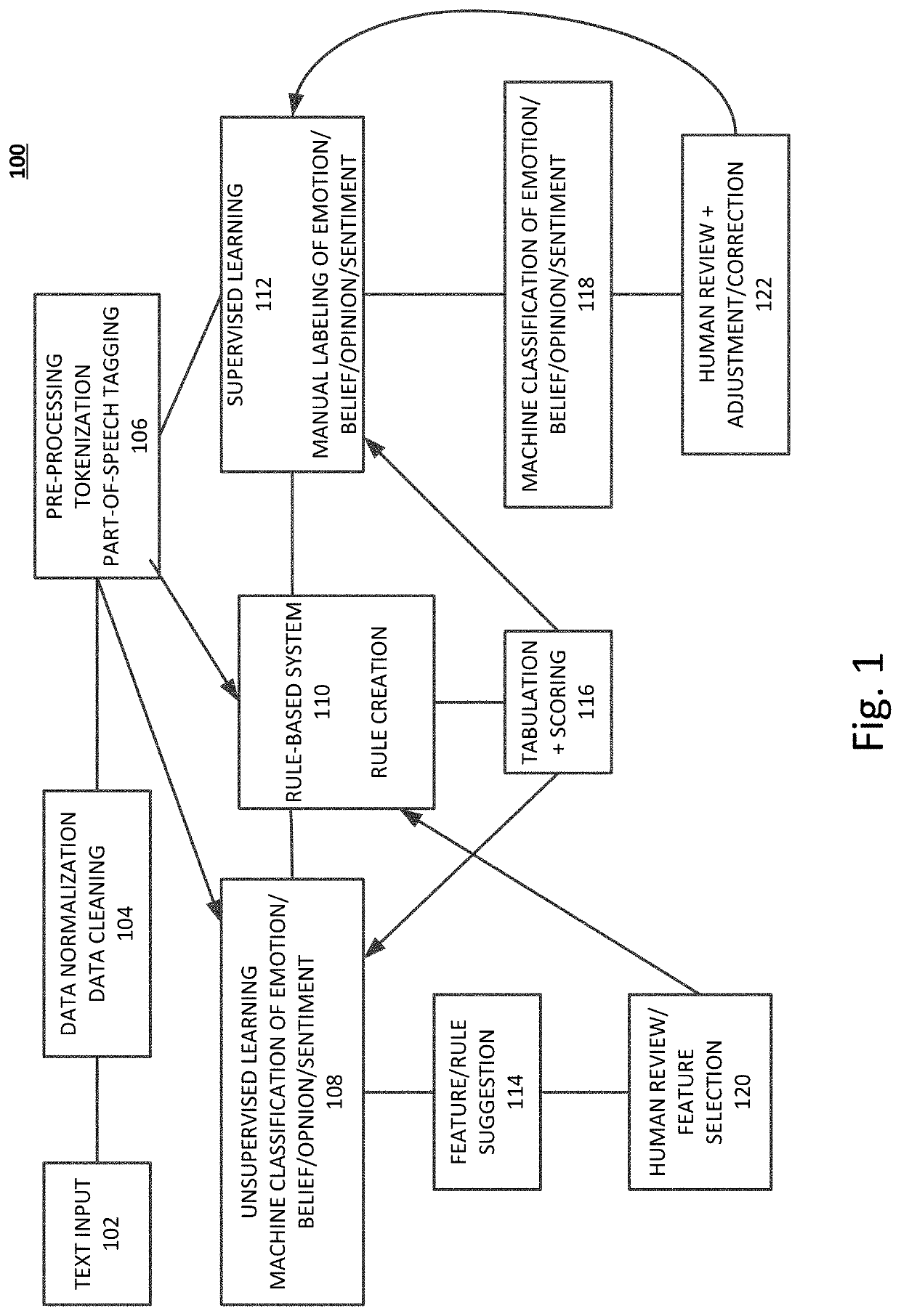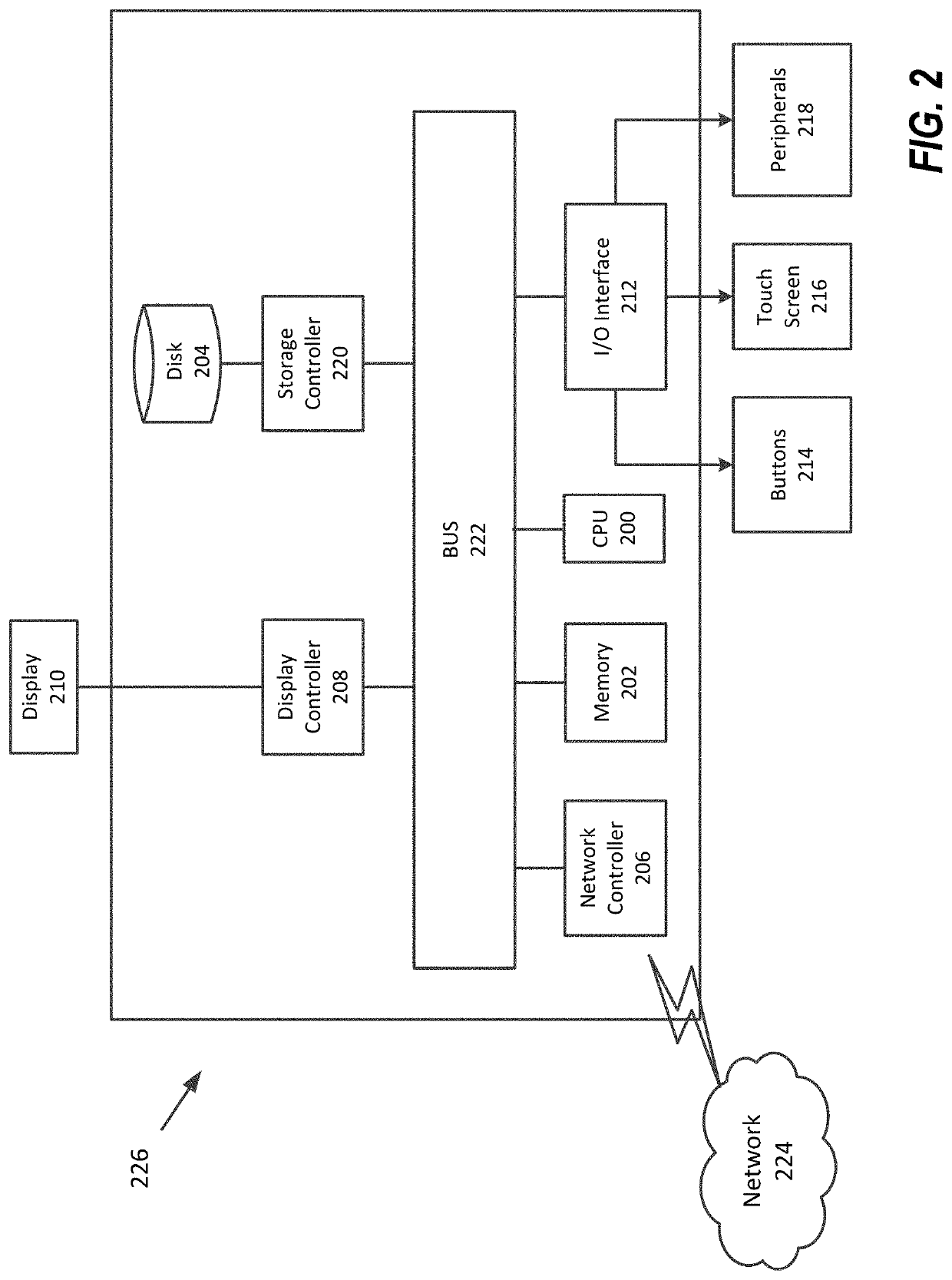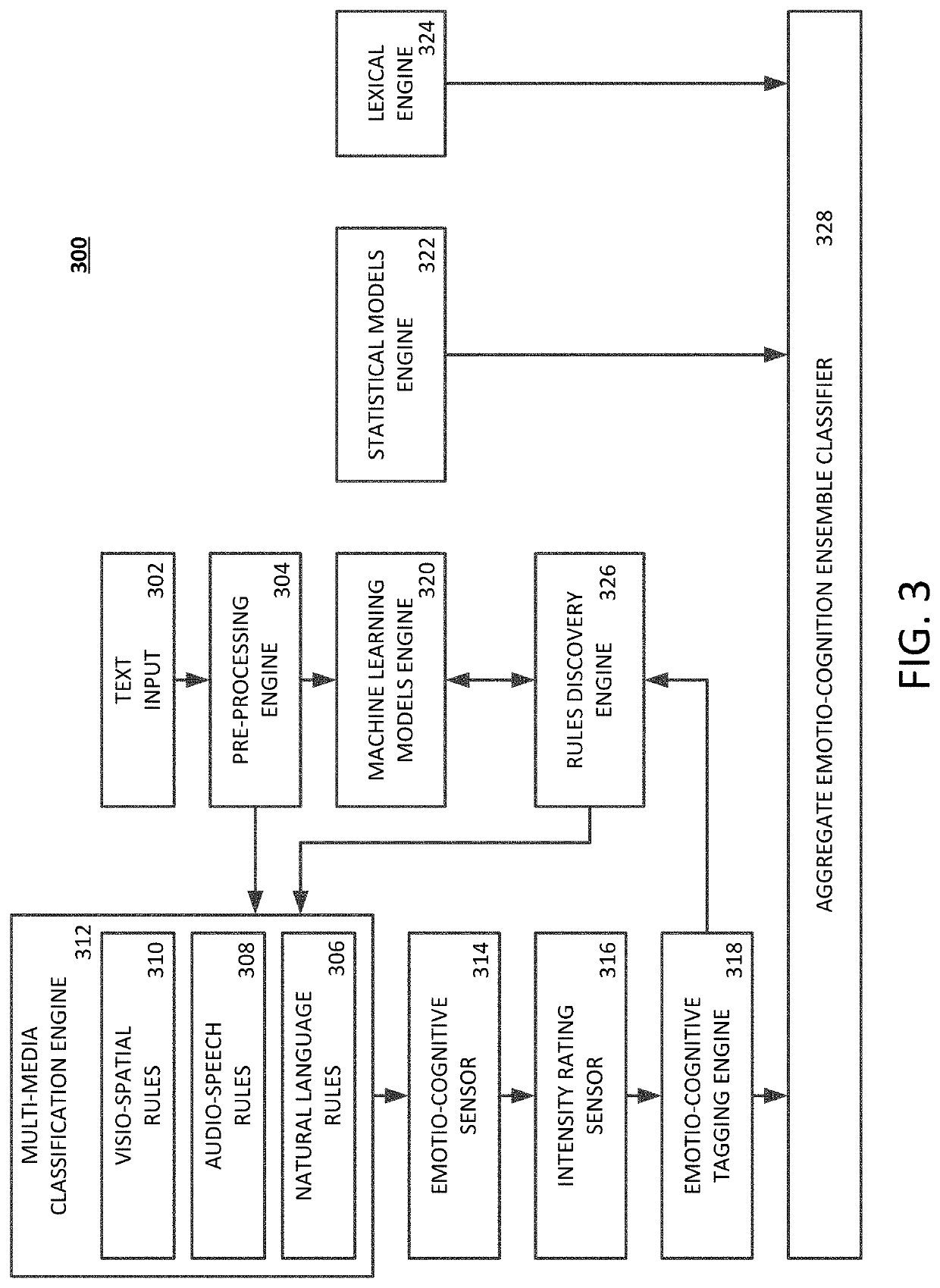Automated classification of emotio-cogniton
a technology of emotio-cognition and automatic classification, applied in the field of monitoring affect, can solve the problems of limited prevention of psychological disorders, poor performance of manual classification methods, slow training sets, etc., and achieve the effect of reducing psychological disorders and reducing psychological disorders
- Summary
- Abstract
- Description
- Claims
- Application Information
AI Technical Summary
Benefits of technology
Problems solved by technology
Method used
Image
Examples
example implementations
[0150]Electronic Reading Device
[0151]Embodiments of the present invention include an electronic reader. An electronic reader can be a dedicated device that incorporates specialized firmware and a display that is configured to optimally display text with high clarity (commonly referred to as an Ebook Reader), or can be a general purpose computing device, such as a tablet computer or smartphone, that is configured with software for text reading, typically in the form of a mobile application (App). An electronic reader has a display screen that is generally 10 inches diagonal or less, and has limited computer processing capability and memory. In most cases, the electronic reader can communicate with a web service via an Internet connection, typically by way of a WiFi connection. Some electronic readers include a communications module for communication by way of cellular transmission.
[0152]The system 300 having a multi-media classification engine 312 can be performed in a device with li...
PUM
 Login to View More
Login to View More Abstract
Description
Claims
Application Information
 Login to View More
Login to View More - R&D
- Intellectual Property
- Life Sciences
- Materials
- Tech Scout
- Unparalleled Data Quality
- Higher Quality Content
- 60% Fewer Hallucinations
Browse by: Latest US Patents, China's latest patents, Technical Efficacy Thesaurus, Application Domain, Technology Topic, Popular Technical Reports.
© 2025 PatSnap. All rights reserved.Legal|Privacy policy|Modern Slavery Act Transparency Statement|Sitemap|About US| Contact US: help@patsnap.com



